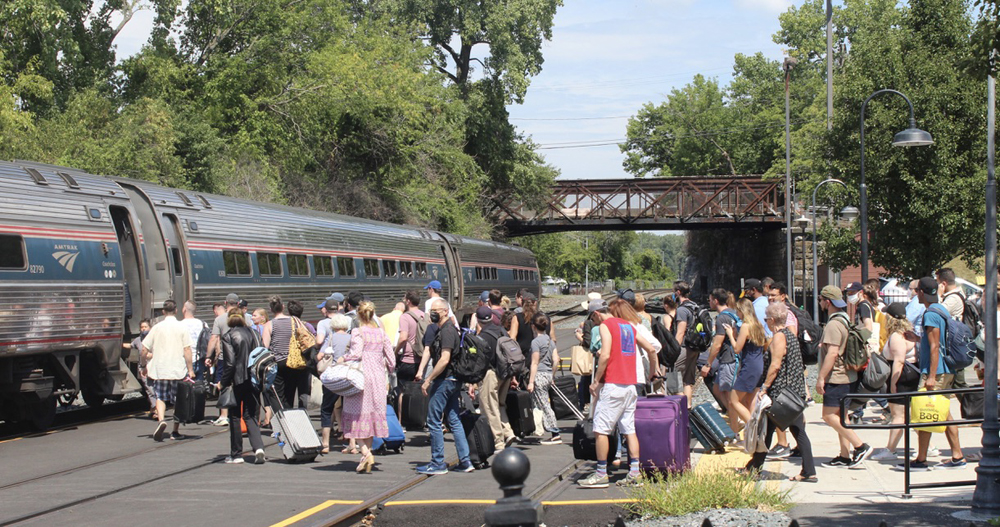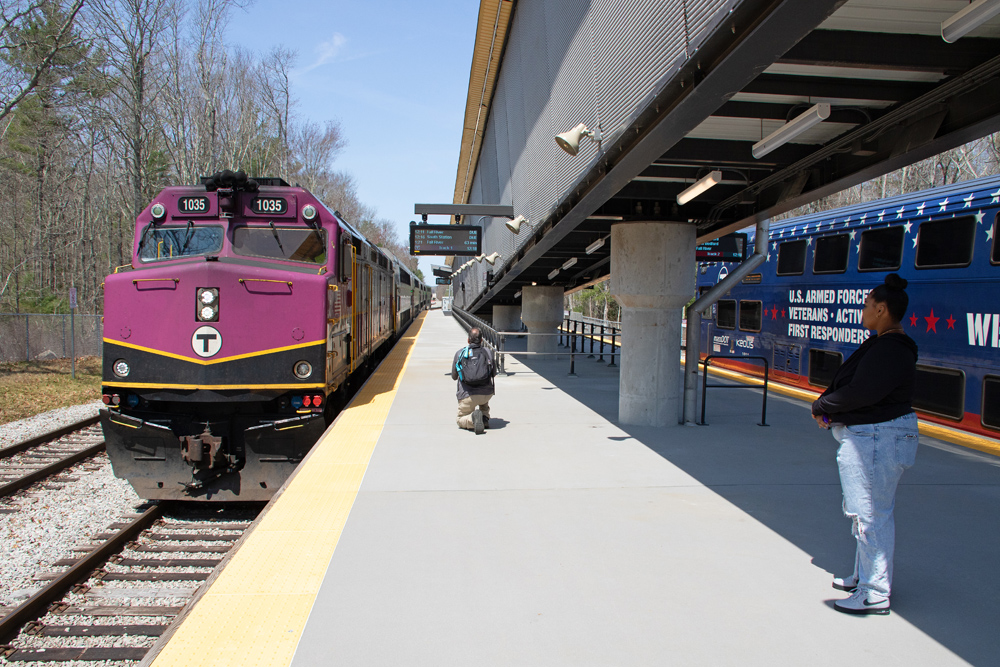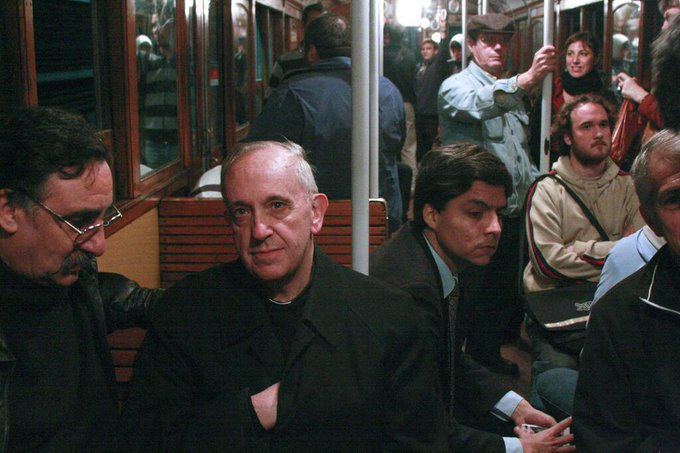ST. LOUIS — The Federal Railroad Administration has awarded a $28.8 million grant for repairs of a key railroad bridge in St. Louis.
The grant to the Terminal Railroad Association of St. Louis is one of 45 rail projects receiving Consolidated Rail Infrastructure and Safety Improvements grants, as announced Tuesday. [See “FRA awards $326 million in grants to 45 rail projects,” Trains News Wire, June 12, 2019.] It will allow replacement of the main span girders on the MacArthur Bridge, a 677-foot structure across the Mississippi River which began construction in 1909 and was not completed until 1917. The current spans date to 1912.
Replacement of the spans is a $57.3 million project, with the TRRA, owned by the five Class I railroads serving St. Louis, providing the remainder of the funds. The grant announced Tuesday follows a $7.1 million grant in 2017 to replace the west approach to the bridge, the Broadway Street Truss. The two grants will extend the life of the bridge — the primary St. Louis-area rail crossing of the Mississippi — to approximately 2085 and bring the structure up to current standards, according to a TRRA press release.
“This grant shows the ongoing commitment of the Federal Railroad Administration to providing critical public investments in the St. Louis area and U.S. economy. The awarded funds are critical to maintaining the current level of service to cargoes shipped by rail and passengers on Amtrak, which in turn reduces congestion and wear and tear on the region’s highways”, TRRA President Mike McCarthy said in a press release.
The grant was also hailed by Amtrak, which uses the bridge for its Lincoln Service and Texas Eagle.
“At Amtrak, we believe services such as our Amtrak Midwest network are what the future of passenger rail service looks like: safe, relevant and reliable, connecting major markets such as St. Louis with Chicago and Kansas City”, Joe McHugh, Amtrak vice president, state supported services, said in a statement. “We are proud to partner with the States of Illinois and Missouri and are looking forward to working with the TRRA to accomplish the next steps.”















@Herb Wildman: When the railroads reached the Mississippi, bridges to cross were very expensive to build, so the railroads created the TRRA to pool & switch their assets instead. TRRA at one time had a monopolistic lock on river crossings in greater St Louis. (including the rail ferries) The MacArthur was actually built by the City of St Louis through a US Congress approved bond act to help break the cross river stranglehold. Though the railroads ignored the bridge for some 15 years, freight rates started to immediately decline for cross river traffic.
Years later the City of St Louis, who wanted the Eads Bridge for transit and historical purposes did a swap with TRRA in 1989 for the MacArthur Bridge. The Eads was functionally obsolete by then as it could not handle dual stacks or high boxes. St Louis removed the car tolls and rehabbed the bridge.
Chicago has a couple of entities that function in a similar fashion, but Chicago had no wide rivers to cross. So the railroads didn’t have to pool assets to reach the city. They just needed an entity to switch between them.
The Indiana Harbor Belt is owned by Conrail Shared Assets and the CP.
The Belt Railway of Chicago is co-owned by BNSF, CN, CP, CSX, NS and UP.
Back in the day it was just cost prohibitive to build these large cross river bridges. That is why the UP started their westward build out on the west side of the Missouri River in Omaha.
There are several books published on the battle to get the first rail bridges across the Mississippi, how it impacted the Civil War and how St Louis was determined to not let Rock Island “steal” cross river rail traffic.
What I can’t understand is why St. Louis has had TRRA for over a 100 years and Chicagoland has never developed such a beast. Many of the same trunk lines serving Chicago also have a St. Louis presence. CREATE simply doesn’t have the same scope as TRRA, though, perhaps, its brief could be broadened to make it so. Having an umbrella organization like TRRA could, it seems to me, save a lot of expense and time. I can;t believe competing jurisdictions and interests are so narrowly parochial and self-serving that , in the larger interest, they couldn’t join in cooperating for common benefit. They should have started decades ago.
See here how they redid the Merchants Bridge approaches in St Louis and the BNSF bridge in West Alton.
http://stlbridge.com/2014/merchants-bridge-approaches/
http://stlbridge.com/2014/bnsf-bridge-18-79-bridge-replacement-and-modifications/
Both of these bridges had archaic & rusted trusses supporting their approaches.
The work on the MacArthur might make a good article for a future Trains issue.
The St Louis MacArthur Bridge project is doing the same thing TRRA did with the Merchants Bridge approaches.
The steel works on both sides are in bad shape being over 100 years old.In fact some of the steel on the Missouri side, you can see complete rust through in places, especially near the Broadway Street truss.
They will build new concrete pylons and then replace the girder plates with new ones right up to the point where the actual bridge span on the original 1907 stone works begins.
While many people will miss seeing the all of the lattice of rusty steel holding up the rails in that early 1900’s style, when its done, the bridge will not lose it Historic Register status as they are not changing the 3 main Pennsylvania style through trusses over the water.
Spit in my face at every turn and the consummate New Yawkah will give you nadah.
“they” NY metro region and Caifornia HSR know very well the “Donald”
LAWRENCE BECK – To use your term “ridiculous” about the process of doling out federal funds, it’s “ridiculous” to think we have even begun to wrap our arms around how “ridiculous” it is. The federals (Republicans, Democrats, doesn’t matter) throw little bits of money around here and there to projects that should be locally funded. And never get to the heart of the matter of a plan to address the real long-term issues facing our national infrastructure.
Everyone thinks they’re entitled to federal funding, whether for a bicycle path or a theater group or operating subsidies for local mass transit. Then when a project acutally needing federal funding comes up, suddenly there’s no more money available, it’s all been spent in dribs and drabs all over the place.
This has been going on for our lifetime. I recall in the mid 1970’s taking a class at Wayne State University taught by a socialist member of the Detroit city council. One of the students proposed that for our class project we apply for a federal grant for the local cause whatever it was. That’s what it came down to 45 years ago and has only gotten worse – the purpose of our lives is to hit up the federals for whatever need we might perceive.
The Gateway Project proposes to close the current Hudson River tunnels, build two new tunnels, and then repair the older tunnels. The Canarsie Tunnels were damaged worse that the Hudson Tunnels. A less expensive and less invasive alternative to the conventional process was employed to repair the Canarsie Tunnels without closing them. Get the Hudson Tunnels repaired first using the process employed with the Canarsie Tunnels, then determine if additional tunnels are needed under the Hudson.
Two points regarding you comment Mr. Beck: First, while no where close to the train frequency seen at the Hudson tunnels, the MacArthur Bridge still carries a substantial number (>35) of freight trains on a daily basis and along with the Merchants Bridge are part of a critical link over the Mississippi in St. Louis. The MacArthur will see even greater demand in the near term as the Merchants is scheduled for reconstruction. Second, $28.8 Million probably wouldn’t cover the cost of porta-potties for the Gateway Project, which is on the order of 200 times more expensive.
They’ll provide funds for a bridge in St. Louis but not for the tunnels under the Hudson – ridiculous.